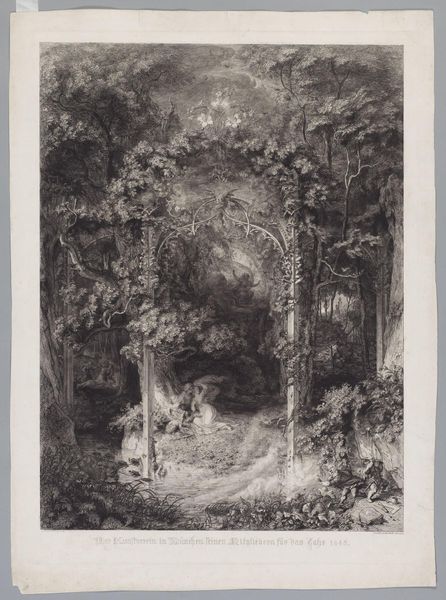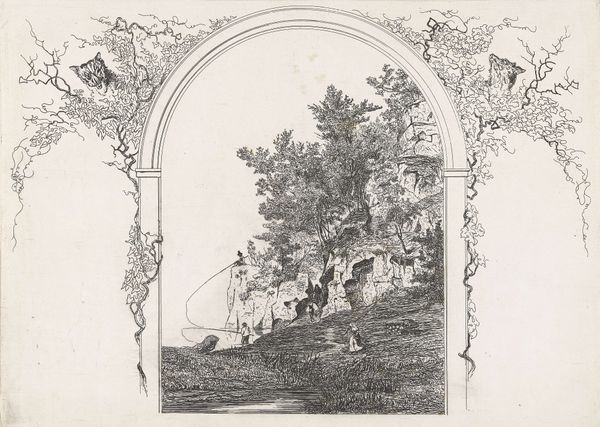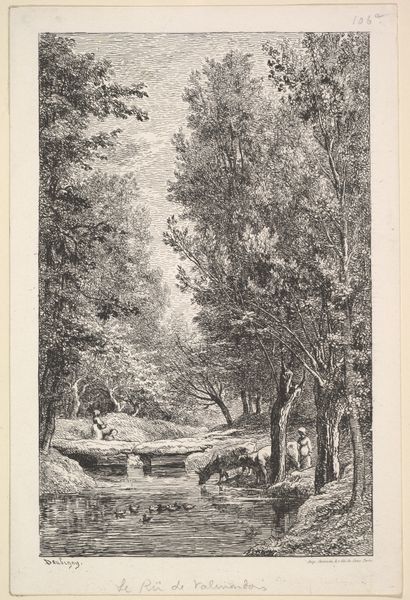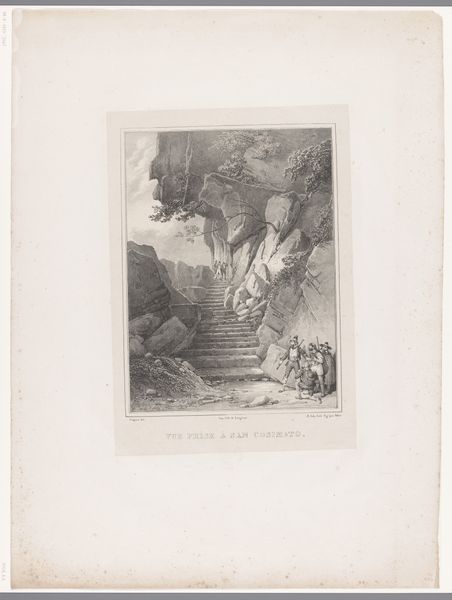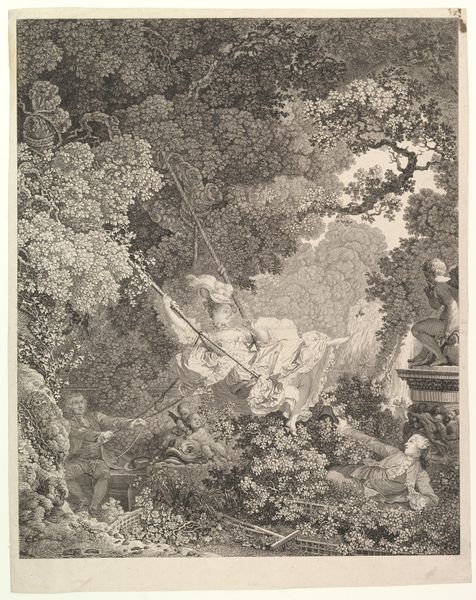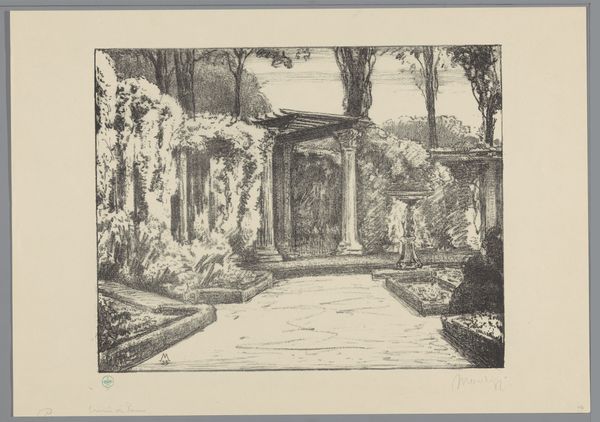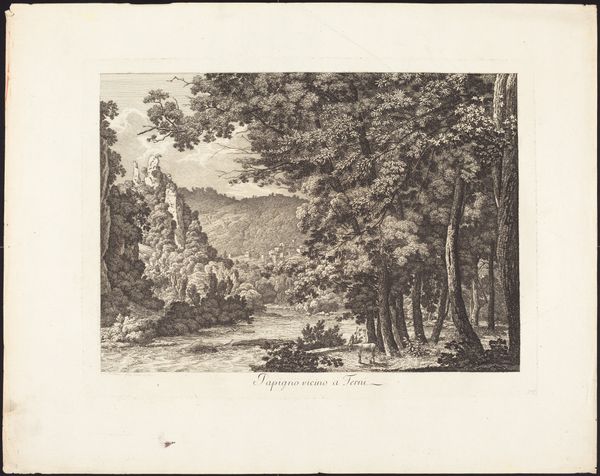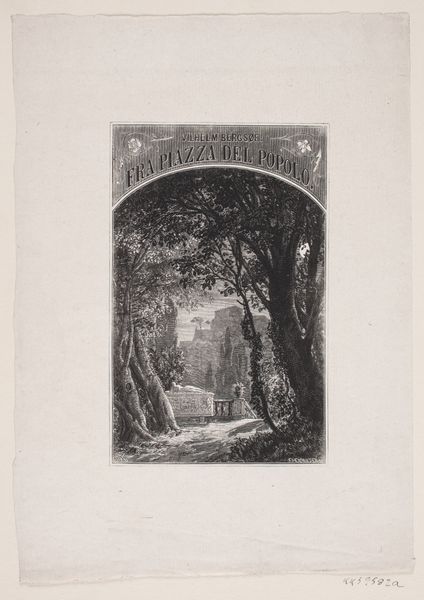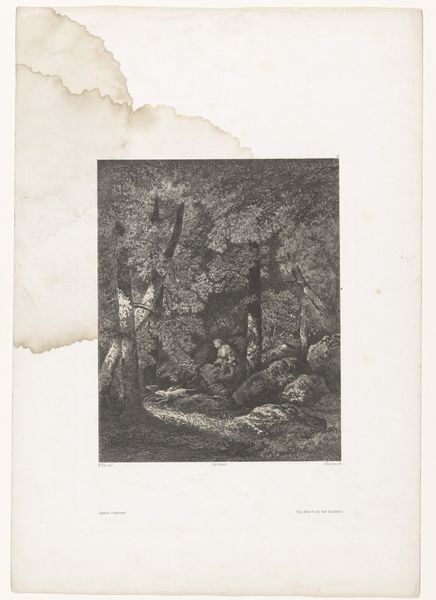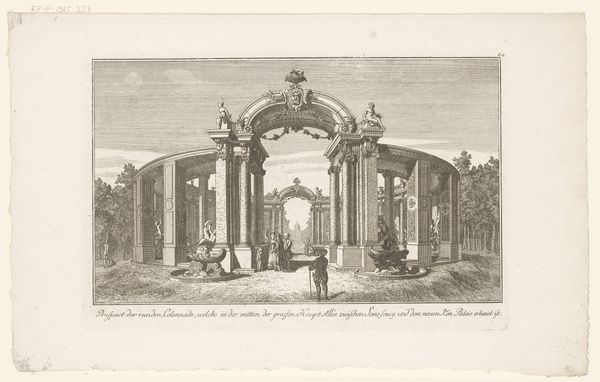
Frontispiece for Heft IV of "Homer nach Antiken gezeichnet", Göttingen: Heinrich Dieterik, 1801–05 and Stuttgart: J. G. Cotta, 1821 1791 - 1801
0:00
0:00
drawing, print, engraving
#
drawing
# print
#
landscape
#
figuration
#
romanticism
#
engraving
Dimensions: plate: 17 13/16 x 14 1/16 in. (45.2 x 35.7 cm) sheet: 21 1/16 x 15 1/2 in. (53.5 x 39.4 cm)
Copyright: Public Domain
This is the frontispiece made by Johann Heinrich Wilhelm Tischbein for the fourth volume of "Homer nach Antiken gezeichnet", published between 1801 and 1805. It was made using etching, a printmaking technique that uses acid to cut into a metal plate. The image depicts an idealized landscape from Homer’s works, reflecting a broader cultural interest in classical antiquity during this time in Europe. This interest was fueled both by archaeological discoveries and the rise of Neoclassicism in art and architecture. Note the prominent grape vines, which could be seen as a classical reference to the importance of agriculture and wine in ancient Greek culture. Tischbein worked in artistic institutions such as the Academy of Fine Arts in Naples. His illustrations of Homer reflect the social and cultural values of his time, particularly the fascination with ancient Greece as a source of cultural and intellectual authority. To better understand this image, historians consult a wide array of resources, including letters, diaries, and publications from the period to reconstruct the social and intellectual world in which it was created and consumed.
Comments
No comments
Be the first to comment and join the conversation on the ultimate creative platform.
